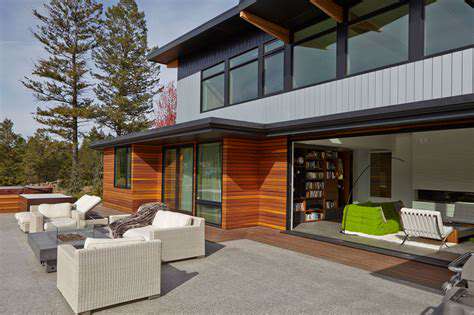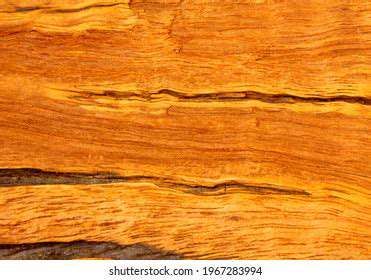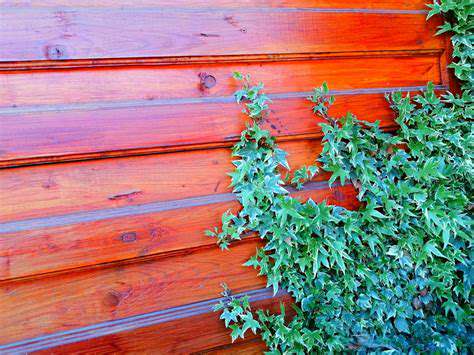Best types of wood for creating durable outdoor furniture
Catalog
Cedar is durable, lightweight, and requires less maintenance for outdoor furniture.
Teak's high oil content makes it weather-resistant and long-lasting despite higher costs.
Redwood is durable, eco-friendly, and less expensive than teak with a beautiful color.
Ipe is a strong, dense hardwood that excels in outdoor conditions but comes at a premium.
Acacia is budget-friendly yet durable, ideal for various outdoor design options.
Cedar: The Classic Choice

Advantages of Cedar for Outdoor Furniture
When it comes to outdoor furniture, Cedar is often regarded as one of the best materials available. Its natural beauty and rich color make it an attractive choice for patios and decks. Cedar wood is known for its incredible resistance to decay and insect damage, which is crucial for outdoor environments where moisture and pests are prevalent.
Moreover, cedar possesses natural oils that provide a protective barrier against environmental elements. This means it requires less maintenance compared to other woods, making it a more practical choice for many homeowners. Cedar's lightweight nature also allows for easy movement, which is a significant advantage if you enjoy rearranging your outdoor space periodically.
- Resistant to decay and insect damage
- Requires less maintenance
- Lightweight and easy to move
Considerations When Choosing Cedar
While cedar has numerous advantages, there are several factors to consider before making your purchase. First, it’s crucial to ensure the grade of cedar you choose is suitable for outdoor use. Not all cedar is the same; for example, heartwood cedar is more durable and resistant than sapwood. Understanding these differences can help prevent premature wear and tear on your furniture.
Another factor to take into account is cost. Cedar can be more expensive than other types of wood, but this price may be justified by its durability and longevity. In the long run, investing in high-quality cedar outdoor furniture may save you money on replacements and repairs. Overall, weighing these aspects is essential for anyone looking to make a deliberate and informed choice.
Teak: The Luxury Material

What Makes Teak Special
Teak wood is known for its high oil content, natural resilience, and impressive durability. These qualities make it one of the most Sought-after woods for outdoor furniture. Teak is classified as a hardwood, and its density ensures that it can withstand harsh weather conditions, including intense sun, rain, and even snow without splintering or cracking.
With a natural resistance to pests and decay, teak requires minimal maintenance compared to other types of wood. This hardy wood can last for decades—sometimes even a century—when properly cared for. It's no surprise that many high-end manufacturers choose teak for their premium outdoor collections, standing by its longstanding reputation for quality.
The Environmental Impact of Teak Production
While teak may be a luxury material, it’s crucial to consider the environmental impact of its production. Teak is often harvested in tropical countries, which raises concerns about deforestation and sustainability. Responsible sourcing is more important now than ever, and Some companies are actively engaging in sustainable logging practices to mitigate these environmental challenges.
- Sustainable plantations are becoming more common, helping to preserve natural ecosystems.
- Certification systems like the Forest Stewardship Council (FSC) ensure responsible forestry.
- Consumers should always look for eco-friendly producers to lessen their carbon footprint.
Caring for Teak Furniture
Proper care is essential if you want your teak furniture to last. Although teak is low maintenance, it can develop a silver-gray patina over time when left untreated outdoors. If you prefer to keep its rich golden hue, regular oiling is recommended. Using a teak protector can also prevent the effects of the sun and rain from taking their toll on your furniture.
Periodic cleaning is also vital. A simple mixture of mild soap and warm water is typically enough to remove dirt and grime. Avoid using harsh chemicals, as these can damage the protective oils naturally found in the wood. Keeping your teak furniture clean and sealed will significantly prolong its lifespan.
Conclusion: Is Teak Worth It?
In conclusion, investing in teak furniture is often considered worthwhile due to its strength, durability, and aesthetic appeal. While the initial cost may be higher than other wood types, the longevity and low maintenance of teak can lead to significant savings over time. Your choice of material directly impacts the enjoyment and lifespan of your outdoor space. Therefore, considering teak as a premium choice makes both practical and aesthetic sense.
Ultimately, whether you're furnishing a garden, patio, or balcony, teak offers a blend of style and strength that is hard to match. Before making a final decision, it’s advisable to explore different teak products and their certifications, ensuring a sound purchase that’ll last for years to come.
Redwood: A Sustainable Option

Understanding Redwood's Unique Properties
Redwood is primarily recognized for its impressive durability and resistance to decay. This makes it an Optimal choice for outdoor furniture that must withstand various weather elements. Additionally, redwood possesses natural oils that help in repelling moisture and insects.
Its beautiful reddish-brown hue enhances the aesthetic appeal of outdoor spaces, making it a favored option among designers and homeowners alike. Moreover, redwood tends to retain its structural integrity over time, which is crucial for any furniture investment.
- Durable and resistant to decay
- Natural oils repel moisture and insects
- Attractive reddish-brown color
- Good investment due to longevity
Environmental Impact of Using Redwood
Choosing redwood for your outdoor furniture also has a significant environmental advantage. Sustainable harvesting practices are increasingly being adopted, ensuring that forests are not depleted. This means that when responsibly sourced, redwood can Contribute to the conservation of ecosystems. It's essential, however, to verify that you are purchasing wood from suppliers who adhere to these practices.
Additionally, redwood trees absorb carbon dioxide during their growth, thus playing a role in mitigating climate change. This carbon-storage feature makes redwood a more eco-friendly option compared to other materials, further solidifying its status as a preferred building material in sustainable architecture.
Maintenance Tips for Redwood Furniture
To ensure the longevity of redwood furniture, regular maintenance is key. Basic care involves cleaning the furniture with mild soap and water to remove dirt and stains. It's also advisable to reapply a protective finish every few years to maintain its attractive color and natural oils.
Although redwood is relatively low maintenance compared to other woods, exposure to sunlight can cause it to fade over time. Thus, consider placing your furniture in shaded areas or using protective covers when not in use. This will keep your outdoor pieces looking vibrant and new for many seasons.
Comparing Redwood to Other Wood Types
When comparing redwood to other popular outdoor materials such as cedar or teak, it's important to look at durability, cost, and appearance. Redwood is often more affordable than teak but offers similar weather resistance. Cedar tends to be lighter and is also durable, though it typically requires more frequent maintenance.
In terms of aesthetic appeal, redwood stands out for its rich color and grain. Whether you’re creating rustic, modern, or contemporary designs, redwood can complement a variety of styles, which cannot always be said for its counterparts.
Conclusion: Is Redwood Right for You?
Deciding whether to use redwood for outdoor furniture really comes down to personal preference and specific needs. Consider your local climate, how much maintenance you're willing to perform, and the overall style of your outdoor space. If sustainability, beauty, and longevity are your priorities, opting for redwood can be a wise choice.
Ultimately, investing in redwood furniture transcends having a practical solution; it's about enhancing your outdoor living experience while making an environmentally conscious decision. Enjoying the natural beauty of redwood can transform your patio or garden into a vibrant and inviting space.
Ipe: The Dense Powerhouse
Origin and Characteristics of Ipe Wood
Ipe, also known as Brazilian Walnut, is a hardwood sourced mainly from the tropical regions of Central and South America. This wood is renowned for its exceptional density and durability, making it an ideal choice for outdoor furniture. Ipe wood measures around 3,600 to 3,800 pounds per cubic foot on the Janka hardness scale, which indicates its remarkable strength compared to other types of wood.
This species has a rich, dark brown color with a beautiful grain pattern that can give your outdoor furniture an upscale look. Additionally, Ipe is resistant to many forms of decay, insect infestations, and even fire, which amplifies its suitability for exterior applications.
Environmental Considerations
When selecting Ipe wood, it’s crucial to consider its sustainability. The harvesting of Ipe must comply with responsible forestry practices, ensuring that the ecosystems from which it is sourced remain intact. Look for certifications like the Forest Stewardship Council (FSC) when purchasing Ipe to guarantee that the wood is harvested sustainably.
Maintenance of Ipe Furniture
Due to its inherent oils and natural beauty, Ipe requires minimal maintenance compared to other woods. However, to maintain its rich color, it may need periodic cleaning and can be treated with a UV protectant to prevent fading. It's often recommended to use a gentle soap solution for cleaning, followed by rinsing with clean water to preserve its appearance.
Cost and Value Proposition
Ipe typically commands a higher price point compared to softwoods or even some other hardwoods. However, its longevity and durability can make it more cost-effective in the long run. When investing in Ipe outdoor furniture, buyers often find that the initial expense is offset by the extended lifespan and reduced replacement needs.
In fact, Ipe furniture can last over 25 years when properly maintained, which justifies the higher upfront investment. For anyone looking to enhance their outdoor space with durable and aesthetically pleasing furnishings, Ipe presents a compelling option that merges quality with practicality.
Acacia: The Budget-Friendly Alternative
Cost-Effectiveness of Acacia Wood
One of the most appealing aspects of Acacia wood is its affordability compared to other hardwoods used for outdoor furniture. Despite being budget-friendly, it does not compromise on quality, which is a significant advantage. In fact, Acacia wood is often priced lower than Teak and Mahogany, making it more accessible for homeowners and businesses alike. This cost-effectiveness allows for a wider range of design possibilities without breaking the bank, which can be particularly beneficial for those furnishing patios or gardens.
Acacia wood comes in various grades, allowing buyers to select options that suit their budget. Notably, it is available in both pre-finished and unfinished varieties. Choosing unfinished Acacia can further reduce costs, provided you are willing to spend some time on finishing it yourself. For instance, applying oil or sealant can enhance its natural properties and extend its lifespan, a worthy investment that promotes durability over time.
Durability and Sustainability of Acacia
Acacia wood is not only cost-effective but also boasts high durability, making it an excellent choice for outdoor furniture that faces varying weather conditions. With a Janka hardness rating of around 1,700 lbf (pounds-force), it ranks among the harder woods available, providing significant resistance to scratches and dents. This level of durability means that Acacia furniture can withstand heavy usage and environmental stressors, lasting for many years, which enhances its overall value.
Maintenance Tips for Acacia Furniture
To maximize the life of your Acacia outdoor furniture, regular maintenance is essential. Simple practices such as cleaning with mild soap and water can keep the wood in good shape without damaging its finish. It’s also advisable to apply a protective oil every season to maintain its rich color and to enhance its natural water-resistant properties. Remember that neglecting maintenance can lead to fading or potential damage from prolonged exposure to moisture or sunlight.
For those in different climates, the maintenance regime might need slight adjustments. For instance, in humid areas, it's crucial to monitor for mold and mildew growth and to treat it promptly to avoid structural issues. Understanding the specific environmental conditions of your location will further help in establishing an effective maintenance routine, ensuring your Acacia furniture remains both attractive and functional for years to come.
- The benefits of modular wooden furniture for dynamic spaces
- Embracing Second hand Furniture: Sustainable Choices for Modern Living
- Sustainable Furniture Source: A Guide to Eco Friendly Choices
- Eco Friendly Wood Types: Sustainable Choices for Your Home
- Evolution of the Woodworking Industry: From Craftsmanship to High Tech Solutions
- Sustainable Materials Not Just a Trend: The Future of Eco Friendly Solutions
- What Defines Modern Home Decor Styles in Today's Interiors?
- Benefits of Using High Quality Cardboard Boxes for Moving and Storage Solutions
- Choosing Wooden Furniture: A Guide to Timeless Elegance and Durability
- Top eco conscious wooden furniture brands to consider
- Best wooden storage cabinets for organizing your home
- How to transform your home with vintage wooden furniture